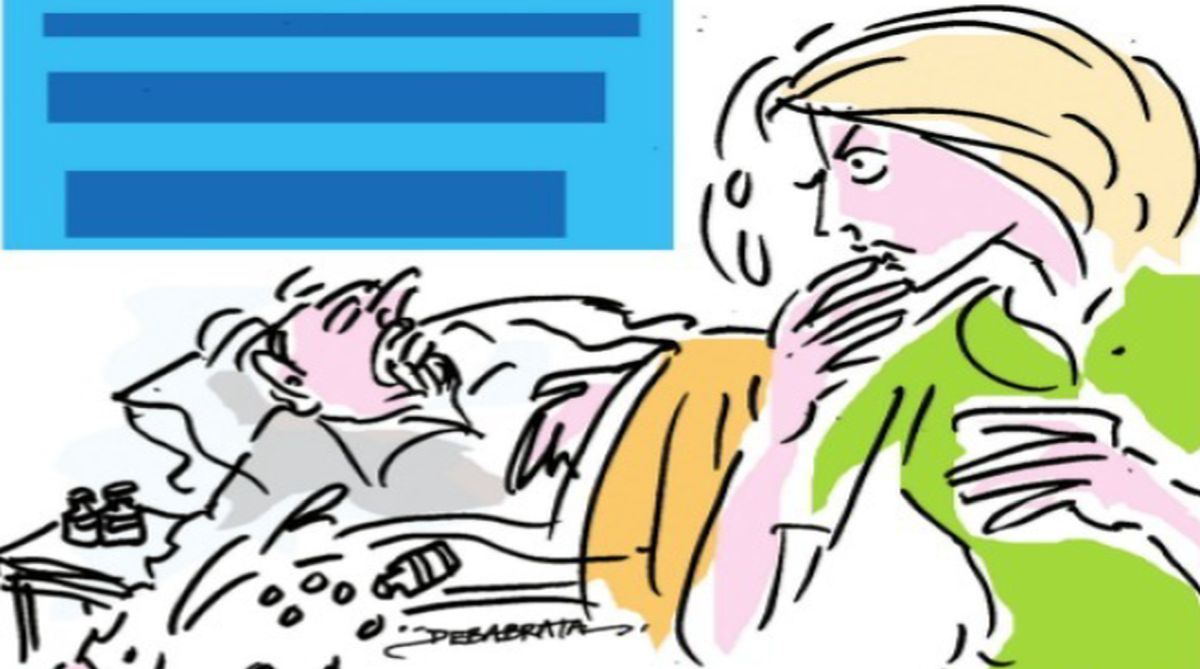He was a scientist and she was a language student. They were from different corners of the globe: he from southern England, she from northern Finland. Unexpectedly, their paths crossed.
While in grammar school, Lawrence played cricket energetically, but after a match, unlike his mates, he would sneak back into school to do something different: explore the skies with a refractive telescope an alumnus had gifted to the school. He joined an astronomy club and even assembled a telescope in his parents’ backyard. He graduated with distinction and went to London with his classmates to celebrate.
Advertisement
That is where, in a nightclub in Piccadilly, he encountered Annikka. She studied languages and had come to London for six months, both to earn some money and to improve her English. She had found a job in a hotel but realized quickly it was no place to practice English as her colleagues were all Asian immigrants.
Now, in the nightclub she was dancing with a man who spoke with an Oxbridge accent and had invited her on the floor. That first encounter led to many more trysts. They continued their relationship through mail, call and trips, and five years later they were married.
In the decade that followed Lawrence finished his doctoral research under a Nobel Laureate and went on to do postdoctoral work in observatories in Belgium and France. A US university offered him a tenured position, which became the principal seat of his subsequent work. He wrote major articles, gained numerous citations and pioneered radio telescope use for galactic studies.
The couple moved into a comfortable home in Chicago, where I met them. Lawrence kept long hours, and I hardly saw him. I saw more of Annikka, who did part-time work, but a young son and daughter demanded the lion’s share of her attention.
Lawrence returned one day from a project in Peru complaining of diarrhea and backache. For academics back pain is a common complaint, but in this case their life was to change radically. The pain quickly proved both acute and intractable; it started unaccountably and continued indefinitely, sometimes cripplingly.
Doctors misdiagnosed it as arthritis and fibromyalgia and prescribed wrong medicines. The pain continued and became worse. Twenty years later, a specialist identified it as arachnoiditis, a dire spidery pain, caused presumably by a misapplied Epidural during a hemorrhoidal operation during adolescence.
Frantically searching for relief Lawrence started taking opioid painkillers, first morphine and hydrocodone and eventually oxycontin. Then larger and larger doses, and more frequently, until he was using different doctors to multiply prescriptions that could give him some remission of agony and let him resume his work. He became addicted to opioids and would go to any length – exaggerate or misrepresent – to induce doctors to prescribe larger doses. He wanted a few pain-free hours to be able to pursue his dream work.
The effect was the opposite. It made him dependent on even larger, and eventually less effective, doses. They made him a different man. He was no longer the person who played soccer with his son or shared a story with his wife. He was never very interested in domestic chores, but now he had no connection with those.
He became careless about his grooming, and his hours of eating and sleeping became erratic. His overweaning preoccupation with his work had not made it easier to live with him. Now, his frantic effort to continue his work, despite his physical limitation virtually isolated him from his wife and children.
Annikka told me she had returned to full-time work as a language instructor now that her children had grown up. Dispirited, she said she did not know what to expect when she returned home from office. Increasingly she drew sustenance from her work life, for her husband’s addiction had turned the life at home both erratic and intractable.
As Lawrence took larger and larger doses of painkillers, his steps became uncertain and he would suffer intermittent periods of confusion. He would have to go for detoxification and come back a little better, but in a few days again, as pain returned, he would start again heavily on opioids. The cycle of addiction, detoxification and relapse got shorter as his pain grew more unbearable.
One winter morning, I got a frantic call. Annikka had entered her husband’s room and found it unusually quiet. Lawrence was not breathing. He had decided to end his agony and swallowed all his remaining pills.
I wonder if the surgeon who placed the needle of an Epidural syringe in the wrong place in a young man’s lumbar could ever imagine the change he wrought in the career of a promising scientist and in the life of the people around him.
The writer is a Washington-based international development advisor and had worked with the World Bank. He can be reached at mnandy@gmail.com











